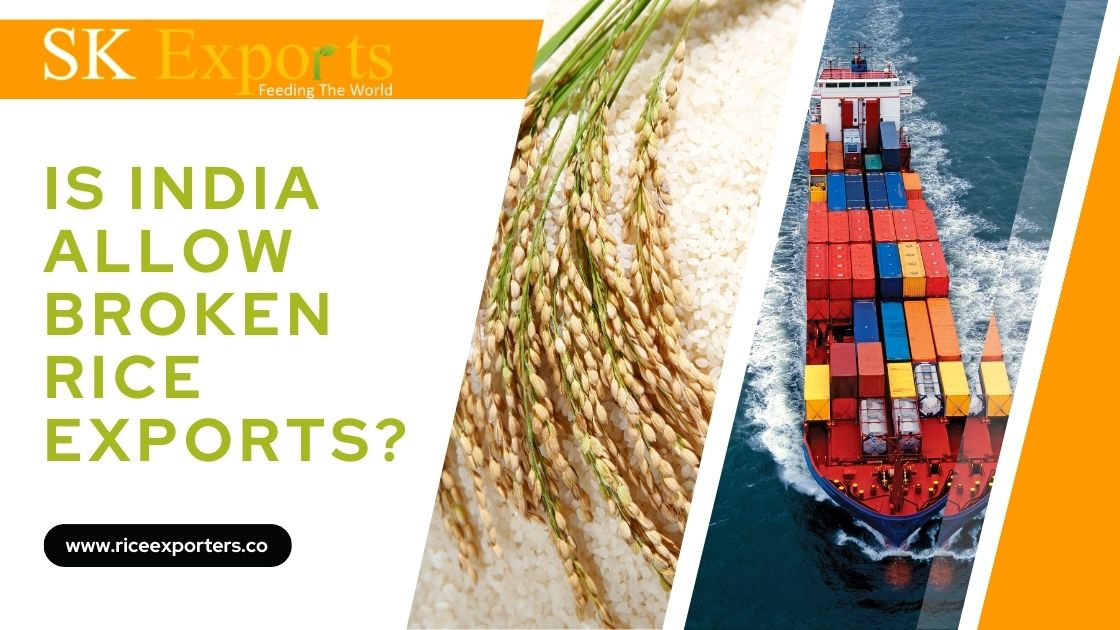Introduction:
In recent years, the global market for broken rice has witnessed significant growth, with various countries emerging as key players in its production and export. Among these, India stands out as a major contender, given its abundant rice production and well-established agricultural infrastructure. However, questions have arisen regarding whether India allows the export of broken rice and the potential implications for both domestic and international markets. In this SEO blog post, we delve deep into this topic to provide insights and clarity on the matter.
Understanding Broken Rice:
Broken rice, also known as “brewers” or “buddy” rice, refers to fragments of rice grains that are broken during the milling process. While traditionally considered inferior to whole grain rice, broken rice has gained popularity for its versatility and affordability. It is commonly used in various culinary applications, including the production of rice flour, rice noodles, and breakfast cereals.
Status of Broken Rice Exports in India:
As one of the world’s largest producers of rice, India plays a pivotal role in the global rice market. However, the regulations governing the export of broken rice from India have been subject to scrutiny and debate. Historically, India restricted the export of broken rice to prioritize domestic food security and stabilize prices in the local market. This policy was primarily driven by concerns over ensuring an adequate supply of rice for domestic consumption, especially in light of the country’s large population and diverse dietary preferences.
Recent Developments and Policy Changes:
In recent years, there have been notable shifts in India’s stance towards broken rice exports. The government has implemented various policy measures aimed at liberalizing trade and enhancing export opportunities for agricultural commodities, including rice. These initiatives reflect a broader strategy to leverage India’s agricultural prowess and capitalize on emerging global demand for food products.
Key Factors Influencing Broken Rice Exports: Several factors influence India’s decision to permit or restrict the export of broken rice:
- Domestic Demand: The foremost consideration for Indian policymakers is ensuring an adequate supply of rice for domestic consumption, particularly in light of food security concerns and the nutritional needs of the population.
- International Market Dynamics: India closely monitors global trends in rice consumption and demand to identify export opportunities and competitive advantages in the international market.
- Price Stability: Export policies are also influenced by efforts to maintain stability in domestic rice prices, thereby safeguarding the interests of farmers and consumers alike.
- Trade Agreements and Obligations: India’s participation in bilateral and multilateral trade agreements may impact its ability to regulate the export of broken rice, as these agreements often include provisions related to agricultural trade and market access.
Benefits of Broken Rice Exports:
The liberalization of broken rice exports from India offers several potential benefits:
- Economic Growth: Increased export opportunities can stimulate economic growth by generating foreign exchange earnings and creating employment opportunities along the rice value chain.
- Market Diversification: Exporting broken rice allows Indian producers to access new markets and diversify their customer base, reducing dependence on domestic demand fluctuations.
- Utilization of Surplus Stocks: Exporting broken rice enables India to utilize surplus stocks efficiently, preventing wastage and optimizing resource allocation in the agricultural sector.
Challenges and Considerations:
Despite the potential benefits, certain challenges and considerations must be addressed:
- Quality Standards: Maintaining quality standards and ensuring compliance with international food safety regulations are essential to safeguarding India’s reputation as a reliable supplier of rice.
- Competition: India faces stiff competition from other rice-exporting countries, such as Thailand, Vietnam, and Pakistan, which may limit its market share and pricing flexibility in the global market.
- Environmental Sustainability: Sustainable rice production practices and environmental conservation efforts are increasingly important considerations in the context of agricultural trade and export.
Comparative Table:
| Country | Broken Rice Export Policy | Market Share |
|---|---|---|
| India | Restricted (historically) | Growing |
| Thailand | Open | Dominant |
| Vietnam | Open | Increasing |
| Pakistan | Limited | Growing |
Conclusion:
In conclusion, the question of whether India allows broken rice exports is nuanced and multifaceted, shaped by various economic, social, and political factors. While recent policy changes signal a more liberalized approach towards rice exports, the issue remains subject to ongoing evaluation and adjustment in response to changing market dynamics and policy objectives. By understanding the complexities surrounding broken rice exports from India, stakeholders can navigate this evolving landscape and capitalize on the opportunities it presents.
